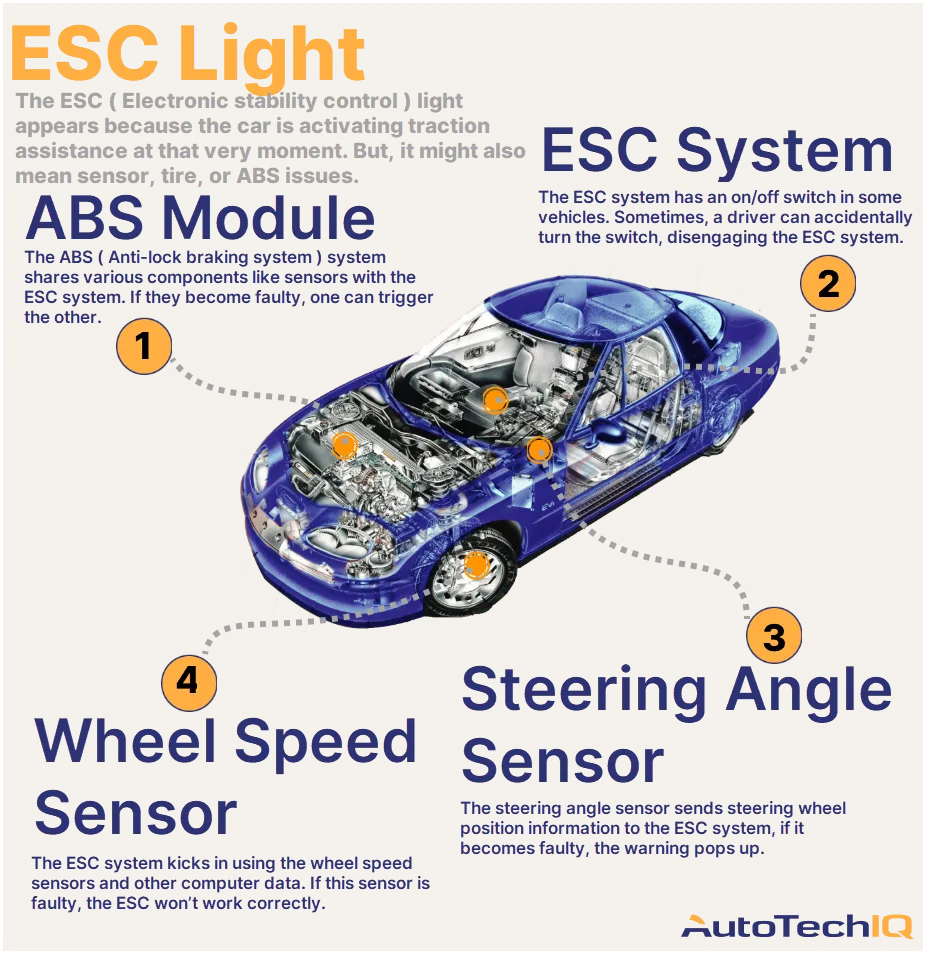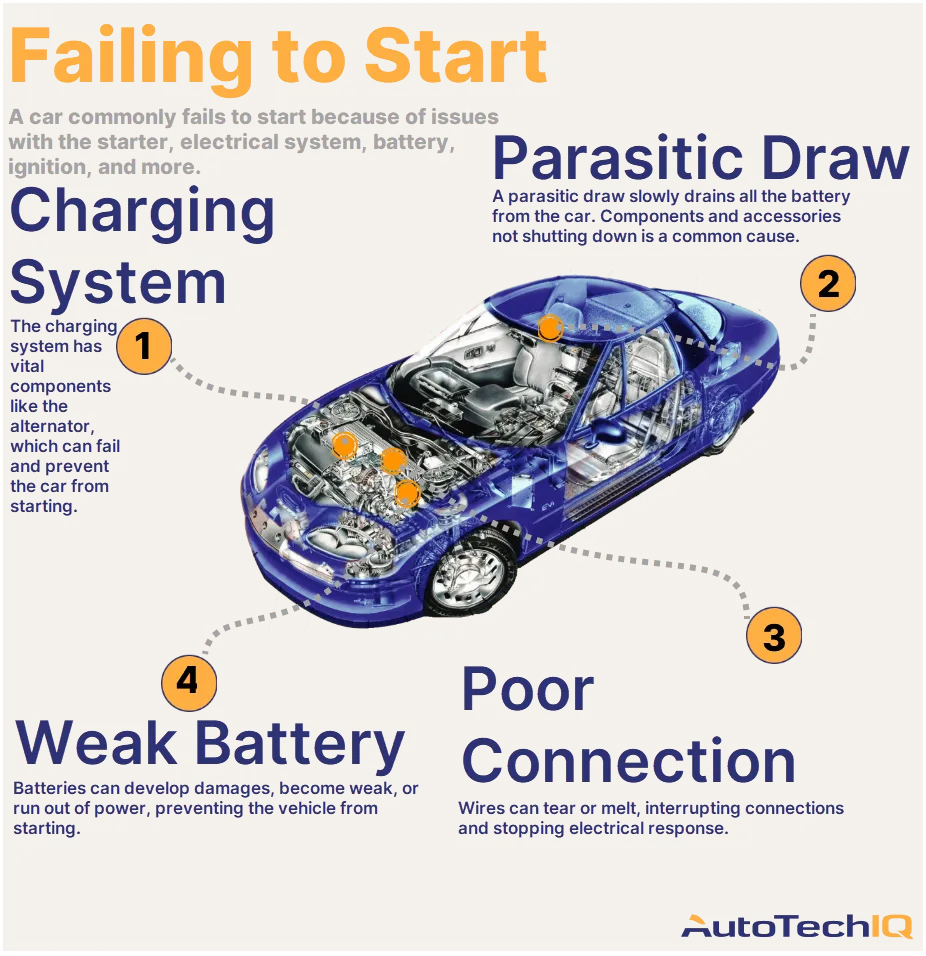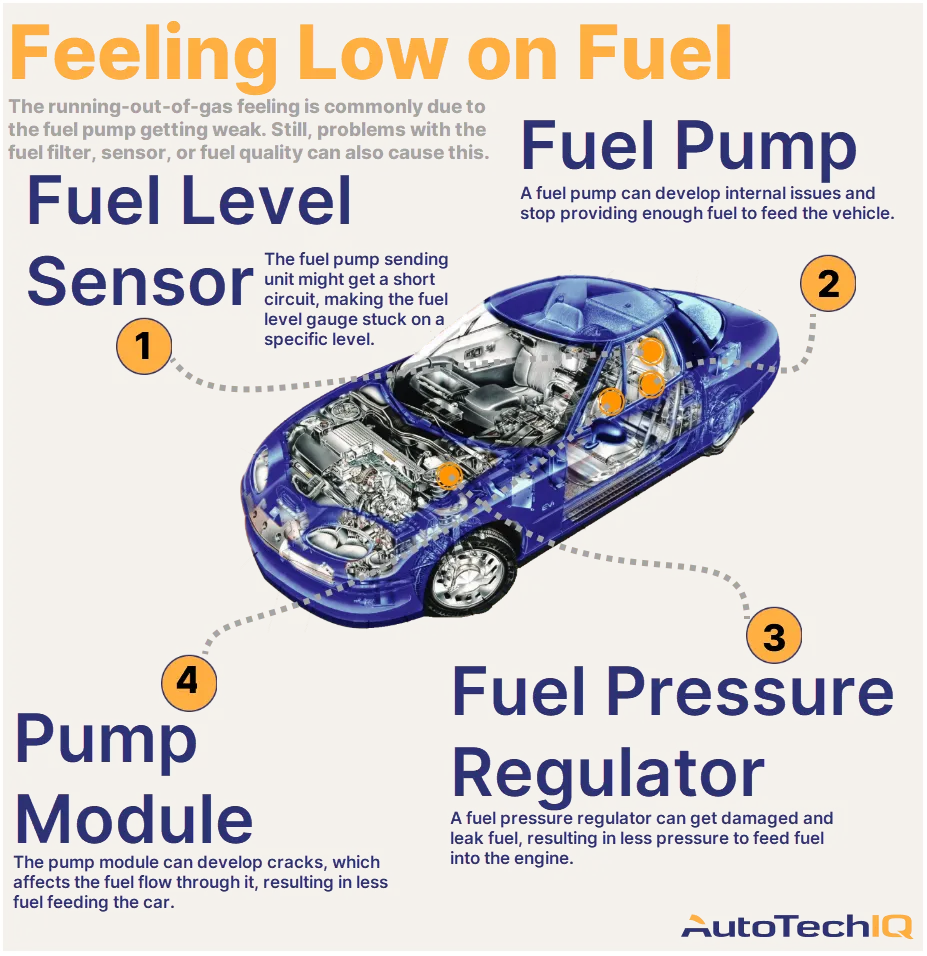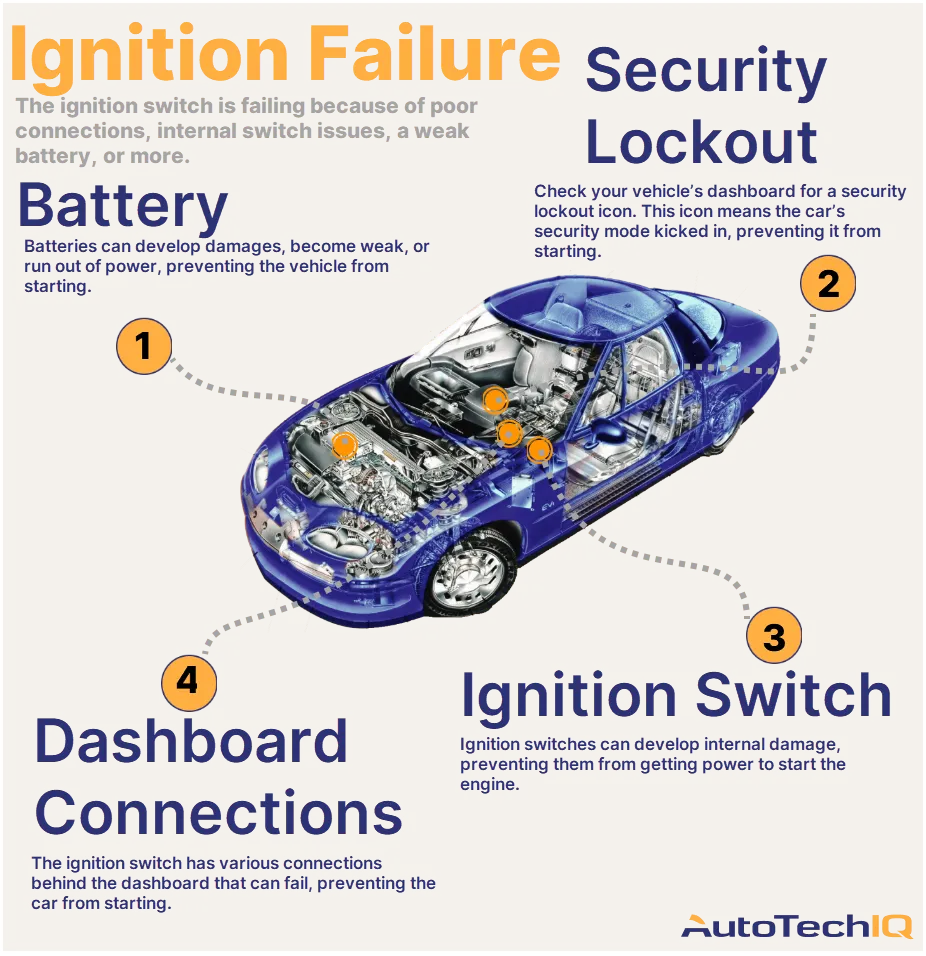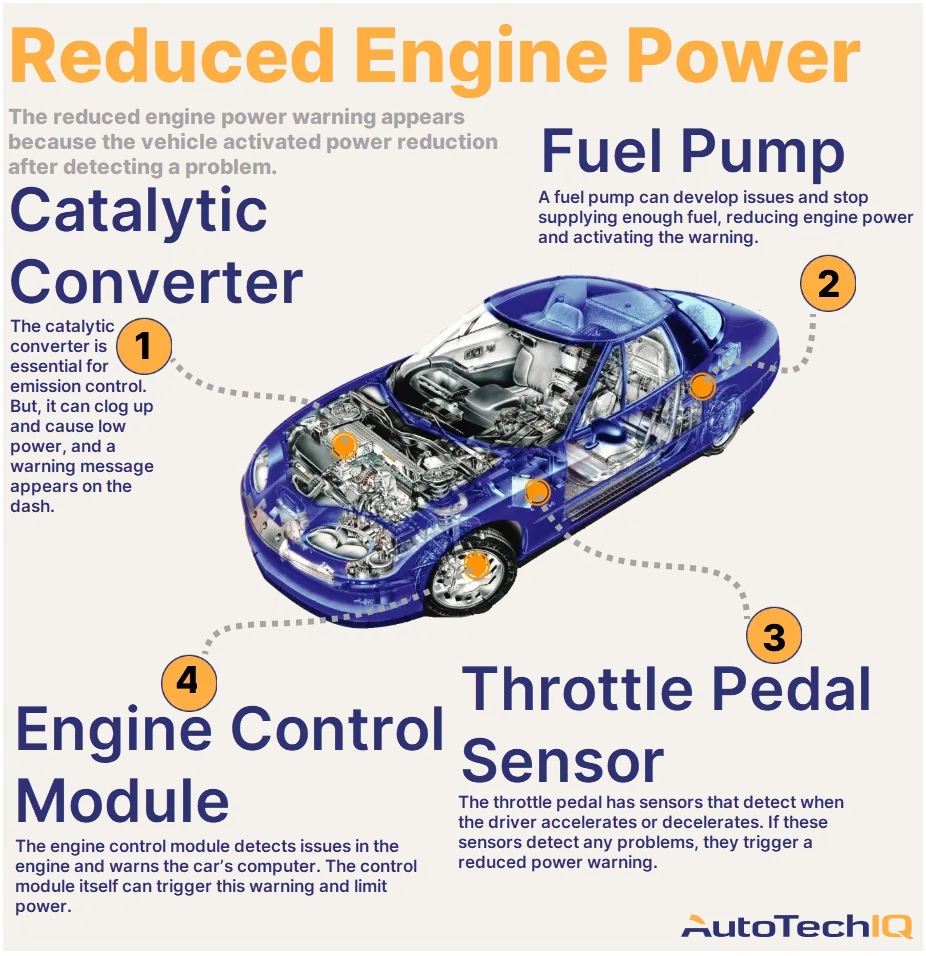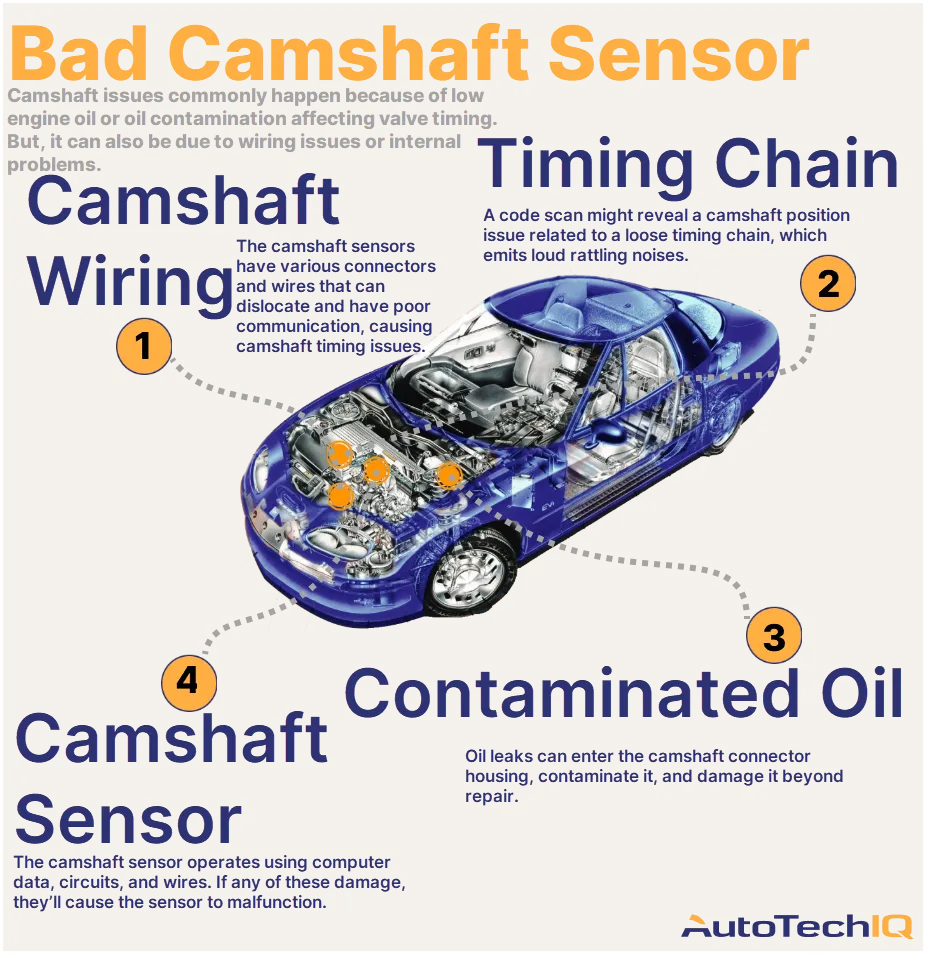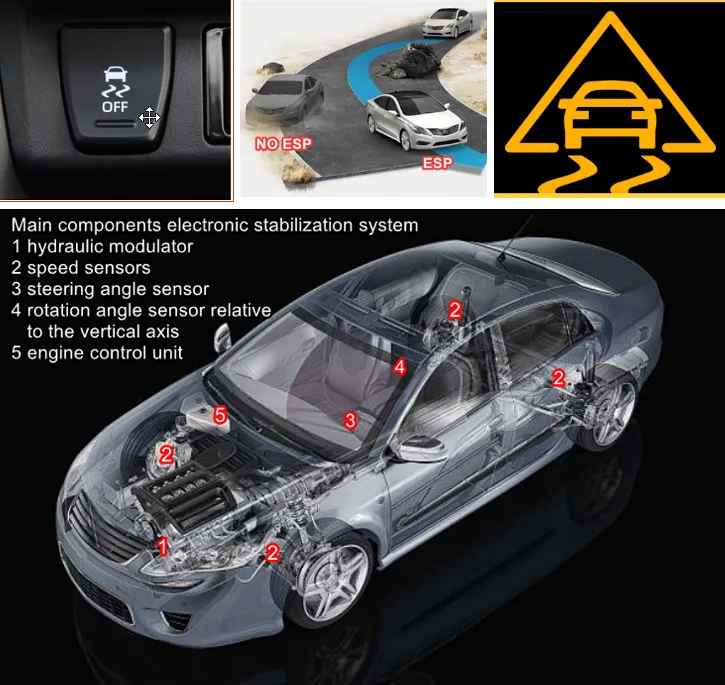
How the Electronic Stability Control system works is an anti-skid system or course stability system. Its main task is to control the lateral dynamics of the vehicle and assist the driver in critical situations. Simply put, the stabilization system should prevent skidding and lateral sliding of the vehicle if they occur, as well as help maintain directional stability, travel trajectory, and stabilize the vehicle's position during high and when driving on slippery roads.
Electronic Stability Control consists of an electronic control unit that constantly processes signals from wheel speed sensors integrated into the ABS system, the position of the steering wheel, and pressure in the braking system. Information is also received from two other sensors that measure angular velocity relative to the vertical axis and the car's lateral accelerations. The sensors detect sudden lateral movement, which is the main sign of slipping, and, having determined its magnitude, transmit a control signal to the control unit. The control unit also simultaneously processes information about vehicle speed, steering wheel angle, and at the same time processes the crankshaft rotation speed. Analyzing this data, the electronic stabilization system understands that the car has skidded and urgently issues a command to selectively brake one or more wheels of the car, based on the direction of the skid and lateral acceleration.
Commands to the brake mechanisms are sent through the anti-lock braking system modulator, creating pressure in the braking system of specific wheels of the car. At the same time, the electronic stabilization system sends a command to the engine control unit to reduce the fuel supply while reducing traction on the wheels.
The system works always and in all modes of movement: during acceleration, braking, coasting. The triggering algorithm depends on each specific situation and the type of car drive. In a turn, the angular acceleration sensor detects the beginning of the rear axle skid. In this case, the engine control unit receives a command to reduce fuel supply. If this was not enough, the outer front wheel is braked via the антиблокировочной системы.
The main advantage of Electronic Stability Control is that with it, the car no longer requires you to have extreme driving skills. You simply turn the steering wheel - and the car itself will think about how to fit into the turn. But keep in mind - the possibilities of Electronic Stability Control to correct a dangerous situation are not unlimited. Therefore, it is important to remember that the electronic stabilization system, although it significantly reduces the likelihood of an accident in many difficult situations, does not relieve the driver of the need to make important decisions during emergencies and other situations that constantly arise while the vehicle.


